Great things are done when men and mountains meet; This is not done by jostling in the street.That is why I have a special fondness in my heart for artists such as Kaethe Kollwitz (1867-1945) who were driven to grapple with the big subjects-- life and death, injustice, war and peace.
Kollwitz lived through two World Wars in Germany where she worked with her husband in the most impoverished areas of Berlin. Her artwork passionately depicted the plight of the poor and oppressed. As a mother and peace activist, she suffered the twin nightmares of losing her son in World War I and losing her grandson in World War II. Here is her mournful picture of a mother searching for her dead son on a battlefield:
Kollwitz was persecuted by Nazi goons who considered her pictures "degenerate art." Her career was blocked and her home was bombed but she refused to be intimidated into leaving Germany. She also refused to stop working, saying "Drawing is the only thing that makes my life bearable." She was one of the most powerful graphic artists of the 20th century.
The place "where men [or in this case, women] and mountains meet" is difficult terrain for an artist. Artists who choose to portray injustice or death (as opposed to flowers or landscapes) tend to get carried away and sacrifice form for content. They often become shrill, or stray from art into the realm of political propaganda.
William Butler Yeats, another cool poet, warned of the dangers of mixing propaganda and art:
We make rhetoric out of arguments with others but we make poetry out of our arguments with ourselves.The pictures above may seem a little extreme, which is why the fine art establishment sometimes looked down on Kollwitz as a "propagandist." But look at the beautiful drawings below. This is not the work of an artist gone hoarse from yelling. This is the delicate touch of a first class artist with great sensitivity and insight.
I admire artists who take the big chances, as long as they retain artistic perspective equal to their passion. For me, that is a far better test than the one offered by Yeats for an artist who takes on big content: is she capable of creating artistic forms strong enough to contain that content?
Kollwitz passes that test.
In my view, she puts to shame much of today's smug art establishment. By casting our eyes back to the place where a woman and mountains once met, we can gain some perspective on just how far we have relaxed our standards to accommodate today's minor artists "jostling in the street." Their tiresome fascination with their own neuroses and bodily functions seems trivial compared to the majestic example of Kaethe Kollwitz. .




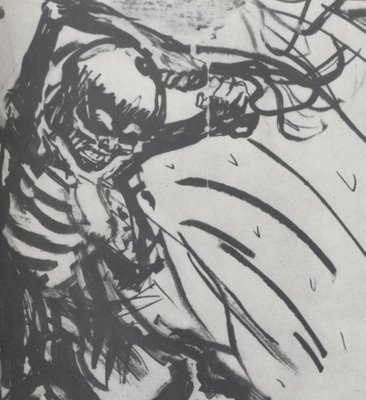
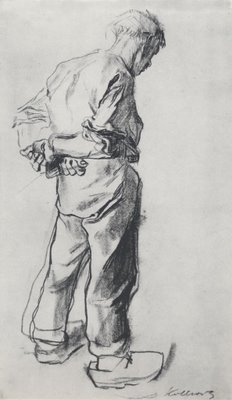
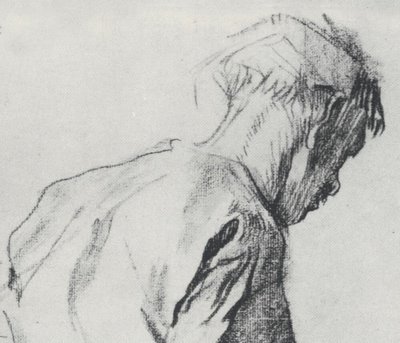

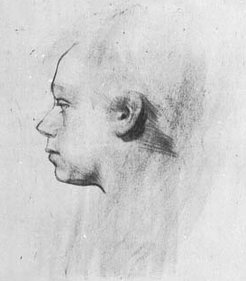
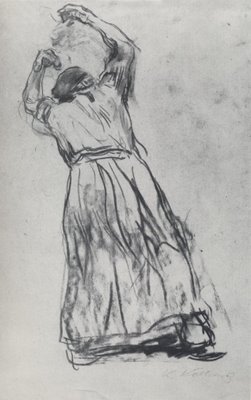

The work is somewhat trite and propagandistic but very well drawn. So I guess it doesn't matter all that much....
ReplyDeleteDavid, thank you so much for this very thoughtful piece on (wo)men & mountains. I especially like the Yeats quote. This is something that I have been struggling with after working in international development, in post-conflict countries -- how to integrate some of the ideas/insights from those experiences into visual expression. It is a scarey endeavor and I must admit I haven't yet been brave enough to do it publically.
ReplyDeleteThanks for the piece. It gives me lots to think about!!
Linda
BTW, how about putting an RSS feed on your site so we know when you post your next article ;)
ReplyDeletePropagandistic? All i see in Horowitz work is HUMAN: fear, hunger, dead, sorrow, joy, love, passion...art.
ReplyDeleteKäthe Kollwitz's personal motto was "Eine Gabe ist eine Aufgabe" which is (freely translated) "A talent is a mission" - she lived by this - and I try,too. Thanks for that wonderful article!
ReplyDeleteHaha sorry for the "Horowitz" thing in my comment, i was listening to him!
ReplyDeleteThanks for this post. I agree about the value of art that reveals truths derived from experiences under pressure. I am thinking, for example, of the poetry of Nobel prize winner Czeslaw Milosz. The verses he wrote during and after WWII are especially moving. See his "Song on the End of the World" (Warsaw 1944) as an example: http://www.peakdesign.com/peak/ram/polsong.htm.
ReplyDeleteApologies to those who have inquired about an RSS feed because of the erratic timing of new postings on this blog. I would love to post something new every day-- I love the feedback I receive here and I have a huge backlog of subjects I am excited about. However, my real life job as a lawyer working on technology issues keeps me working bizarre hours or traveling. It's a lot harder to post something new when you are logging on through a dial up modem from a hotel in Istanbul!
ReplyDeleteI will always post at least once a week, and will try to do so on a more regular schedule. I am glad to be in touch with people who care about these issues and I am frankly flattered that you take the time to stop by this little blog. Thanks very much!
Hi David!
ReplyDeleteYour posts are well worth the wait! I've put a link on "My Yahoo" for your site so I'm notified immediately. For those who want to do the same, it is just a matter of adding:
.atom.xml
to the end of your address.
Cheers,
Linda
Amazing read David. What a woman.
ReplyDelete